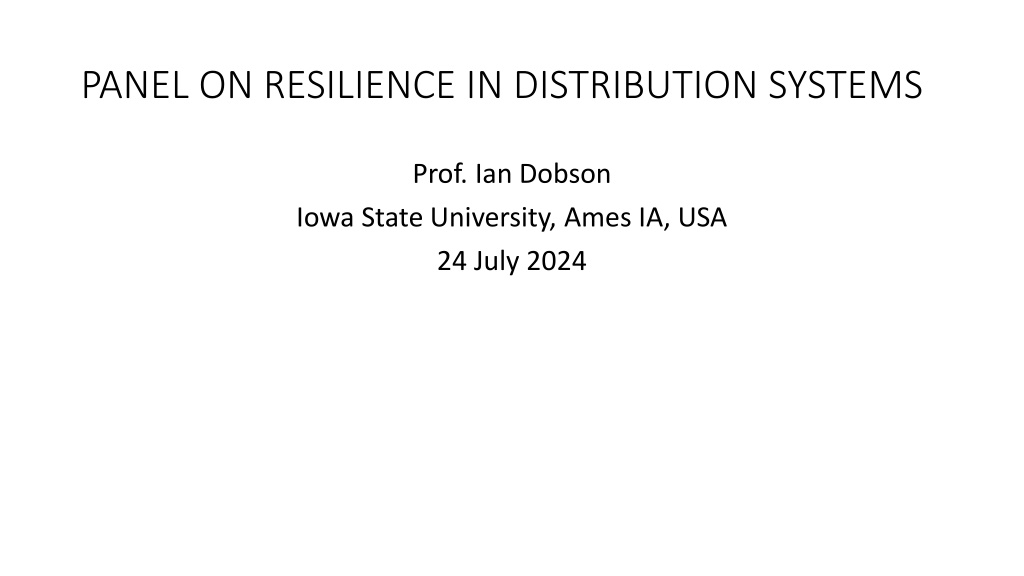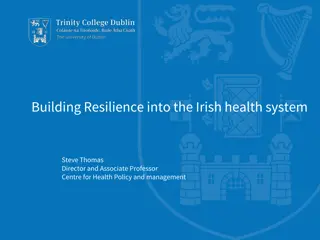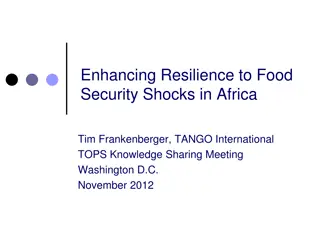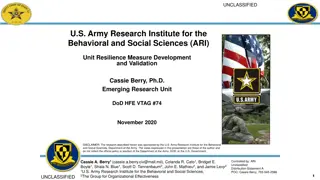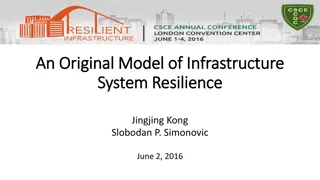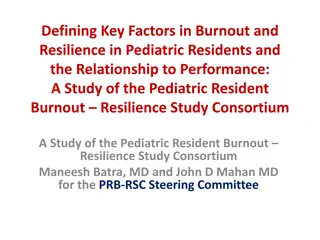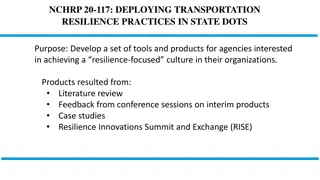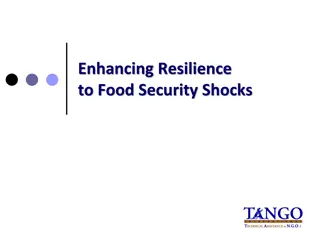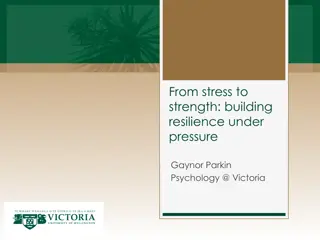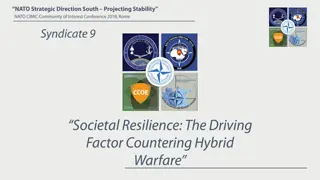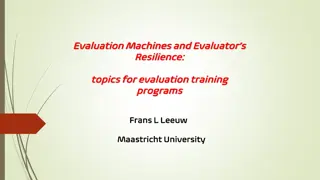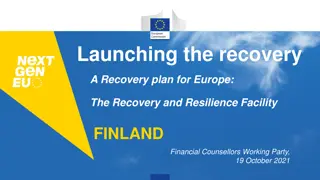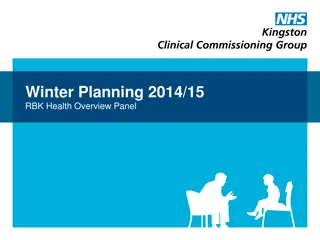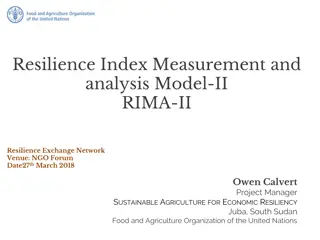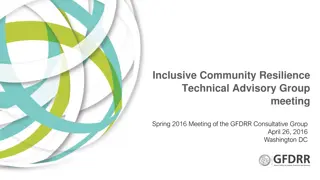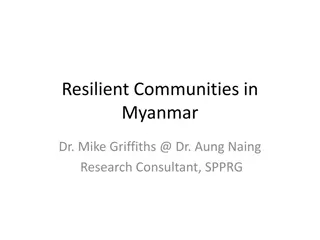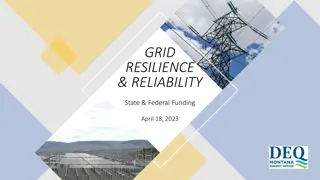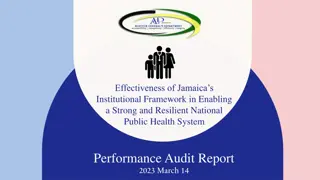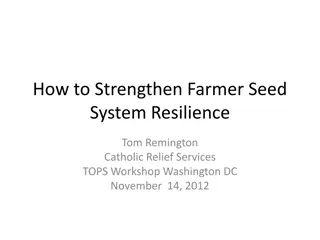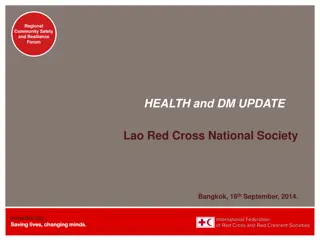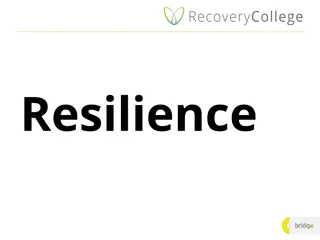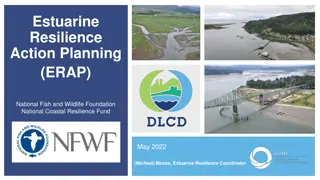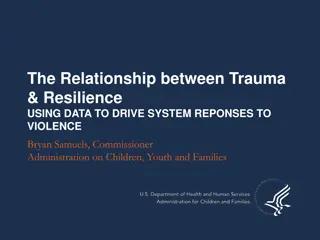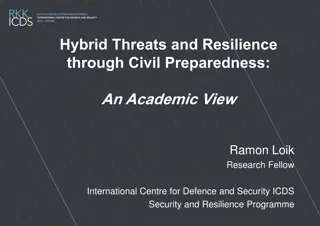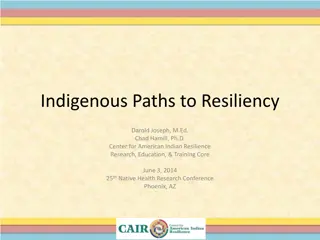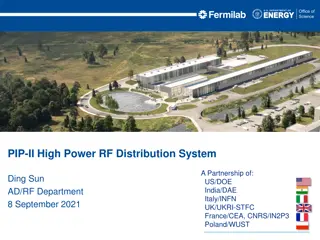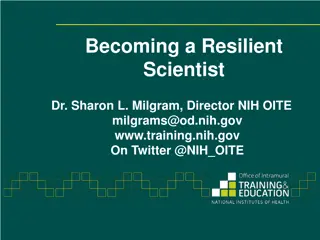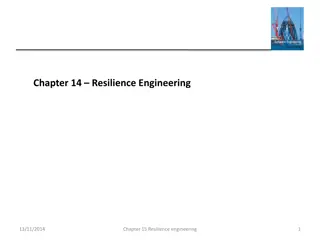Enhancing Power System Resilience: Insights and Strategies
Explore the critical aspects of power system resilience in distribution systems, focusing on extreme events, asset hardening, fast recovery, and administrative processes. Learn how resilience differs from reliability, robustness, and other concepts, and discover practical strategies to implement resilience effectively. Dive into case studies showcasing the importance of historical outage data analysis in justifying resilience investments and improving system performance.
Download Presentation

Please find below an Image/Link to download the presentation.
The content on the website is provided AS IS for your information and personal use only. It may not be sold, licensed, or shared on other websites without obtaining consent from the author. Download presentation by click this link. If you encounter any issues during the download, it is possible that the publisher has removed the file from their server.
E N D
Presentation Transcript
PANEL ON RESILIENCE IN DISTRIBUTION SYSTEMS Prof. Ian Dobson Iowa State University, Ames IA, USA 24 July 2024
Resilience definition and scope Power system resilience is the ability to limit the extent, severity, and duration of system degradation following an extreme event (CIGRE WG C4.47) Aspects of resilience: Focus on extreme events Hardening assets Fast recovery Administrative More broadly: mitigating societal impacts
Resilience and other concepts Reliability is performance averaged over the year - reliability metrics can be dominated by small events - extreme events are often excluded from reliability metrics such as SAIDI - even if extreme events included, reliability metrics do not directly address extreme events - reliability improvements may also improve resilience Robustness is similar to resilience Flexibility and redundancy are very useful in fast recovery
How to implement resilience Define the different extreme events that apply to your system, such as hurricanes, storms, floods, earthquakes, fires, epidemics, attacks Try to rank the extreme events by risk (probability and impact on society) Incorporate resilience aspect in all management and projects as feasible: - implement low cost solutions - include resilience benefits in project assessment - try to justify investment in effective high cost mitigations
Making the case for resilience investments with historical outage data from an outage management system Group outages into events in which outages accumulate Analyze events for cause, severity (eg customer hours), and frequency. Focus on large events but also consider all events. To evaluate the resilience benefits of proposed upgrades, one straightforward way is to rerun history with the upgrade included.
Extract resilience events and metrics from distribution utility data Historical outage data from utility Outage Management Systems: individual outage start and end times, cause codes, element out, location, number of customers out Resilience events happen when outages bunch up and accumulate Performance curves P(t) track number of unrestored outages (or customers): area = outage hours Get resilience metrics from dimensions of performance curve, such as number of outages, duration, customer hours. Customer cost is taken as proportional to customer hours.
Tracking customers in a distribution system event area area = customer hours area
RERUN HISTORY with effect of investment included; then recalculate metrics to quantify benefits of investment Hardening Reduced outage rate Implement reduced outage rate by sampling reduced number of outages Advance restore times and recalculate metrics Faster restoration New way to quantify benefits of resilience to stakeholders because it relates to the lived experience of customers
Results of wind hardening 10% reduced outage rate = 0.22 mph hardening small events have 1 or 2 outages medium events have 3-15 outages large events have >15 outages
Results of Faster Restore (times 0.95) small events have 1 or 2 outages medium events have 3-15 outages large events have >15 outages
References A. Ahmad, I. Dobson, Towards using utility data to quantify how investments would have increased the wind resilience of distribution systems, open access IEEE Trans. Power Systems, July 2024 https://ieeexplore.ieee.org/stamp/stamp.jsp?arnumber=10356768 A. Ahmad, I. Dobson, Quantifying distribution system resilience from utility data: large event risk and benefits of investments, Arxiv preprint http://arxiv.org/abs/2407.10773 Ian Dobson email is dobson@iastate.edu
Taking into account your extensive knowledge about resilience, could you please specify its definition and its differences compared to concepts of reliability, robustness, security and flexibility in power systems. What basic stages must a distribution network operator comply with to define and implement resilience in its system? What experiences do you know of resilience schemes applied to distribution systems? You can give a brief description.
